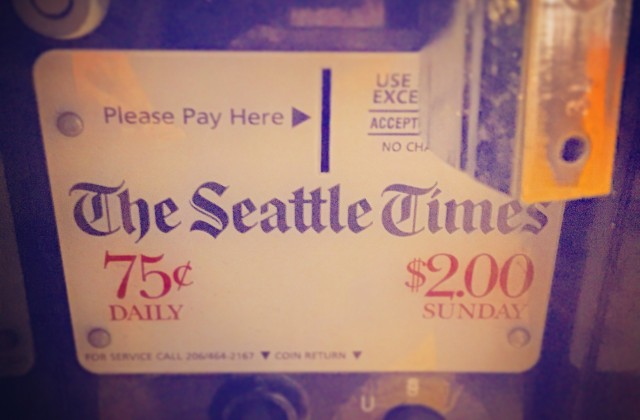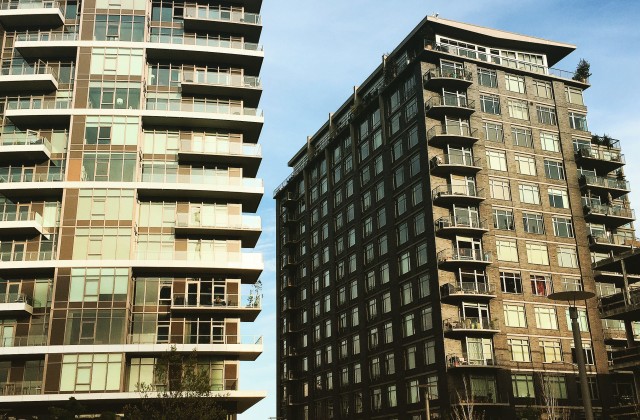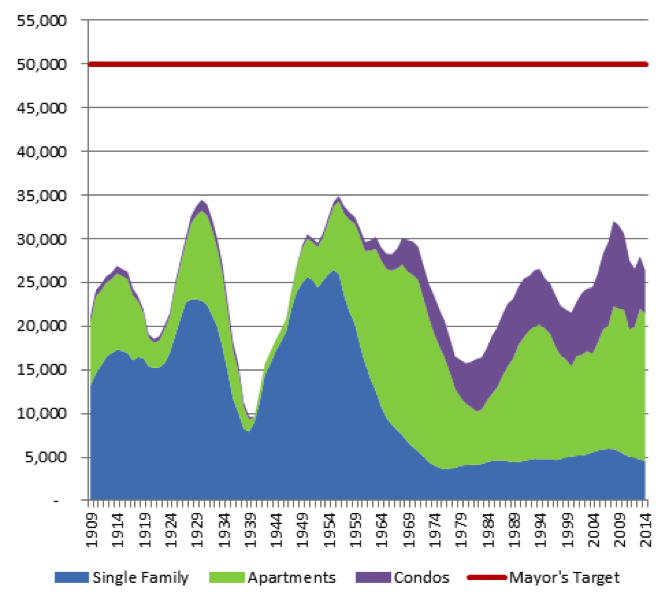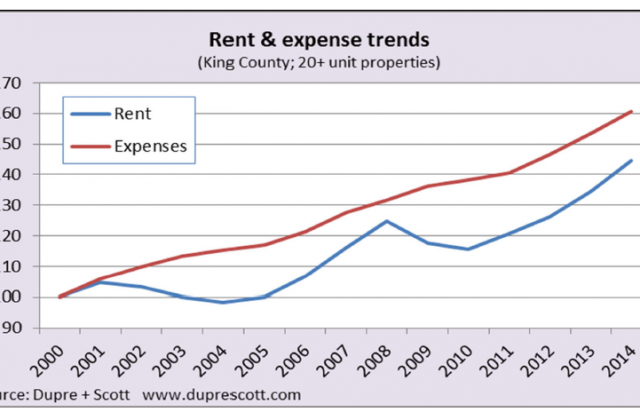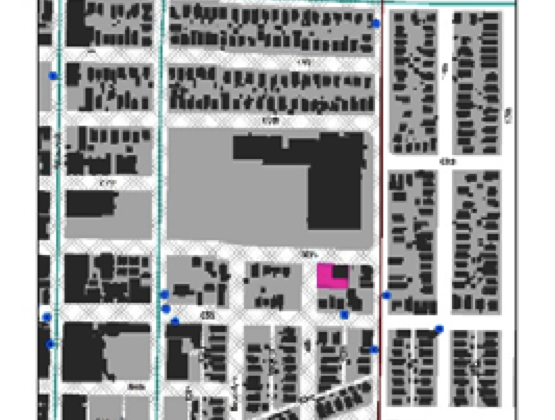Hot Dogs, Housing, and the Fear of Writing
One year ago today, Publicola published a blog post called Seattle City Council Common Denominator: Smothering Innovation, that I suspect made a few people, especially now former Councilmember Sally Clark, very mad. I was encouraged to submit a post to a website about the process of writing. Their request for posts was titled, “The Call to Create.” This is what I came up with. They didn’t publish it. And a year after I wrote the post, I figured I’d share that writing about writing here.
I have never called myself a writer. Somehow that term doesn’t seem applicable to me. But I do write, and it is the pixelated word that got me where I am today, working to change the narrative in Seattle about how we grow sustainably. As a blogger, I spoke up about things in a way that many people hadn’t before. I was pro-development and pro-developer at a time when developers are perceived as bad people. I see developers as the people that take the risks to build our city’s future. My own creative process, if it can be called that, is about change.
The phrase in the request for submissions, “call to create” is loaded with assumptions. Is there a complimentary phrase: the call to destroy? Does either call exist? The presumption is that there is a caller and a called. Creation also presupposes destruction. Do we really want endless creation? Doesn’t that, as Eddie Izzard points out, just mean we will need a bigger garage to store everything that we create?
I would call this dialectic between creation and destruction change. This is why I write what I write. Often what I see in public policy is an effort to stop change, to make the current situation the permanent. But the fact is that Seattle is the fastest growing city in the United States; and growth isn’t some nebulous force, it is people. Human beings are moving here, and they need places to work and live.
Our problem is very much like a family hosting Thanksgiving. We have to prepare for the guests we expect. They’ll need a table big enough, with enough chairs to sit on. Each person will need utensils and an appropriate portion of food. All this can be planned for in advance.
But when it comes to housing policy, our leaders makers are doing the equivalent of sending back the chairs; the guests are still coming, but they’ll have no place to sit. At almost every turn, the City’s leaders have been doing things to make it harder to build housing, making more rules, imposing more fees, and bargaining away additional development capacity. Why are they doing this? To make sure the people who are already here are more comfortable, to protect them from the anxiety created by change.
In my writing I have been very hard hitting, and this can make people upset. In one blog post I mocked the Council saying
If the city of Seattle regulated hot dogs one can only imagine what the advent of the corn dog would provoke at City Hall. How do we define a corn dog? Is it safe? And about that breading made of corn as opposed to a bun—what have other cities done?
In subsequent correspondence with a Councilmember, Sally Clark, she brought this up.
I look forward to hearing more, though I am very busy crushing innovation in other areas. Hot dogs and corn dogs are in the crosshairs, as you know.
Ouch. And I responded back.
The corn dog example is apropos here; it’s likely we’d end up with less units [of housing] and higher prices of something we actually want. Unlike Uber (and no criticism of them is intended) we can go into the numbers.
We hope you’ll let the innovation run free; hot dogs, corn dogs . . .
I wrote the corn dog post in about 10 minutes and hit send to an editor who worked it over a little bit, but not much. Less than two hours from the time I had my fingers on the key board the post was live and, evidently, roiling through City Hall. The idea had come to me a week or two earlier when I saw a man walking out of a Safeway in West Seattle eating a corn dog. The analogy came immediately.
I am often reminded of an interview with Jacques Derrida in which he speaks of the fear of writing.
I relate to this so much, that I have actually studied what happens when I wake up in the morning and I feel the strange anxiety he describes. What is it? Is it the fear of the “call” I should listen to; or is the “call” the urge to write something that will certainly be upsetting. I’ve come to believe that the burst of energy that comes while writing something that will have impact, and the strange twilight fear are both an indicator of a call; they go together and can’t be separated.
And that fear and anxiety prove that words matter, they are serious tools that can take things down or build things up, create and destroy. What’s happening with housing policy matters not just for the people here today, but the people who want to be here tomorrow. Will we clear space for them at the table, or will we fight change? Will we destroy some old ways of doing things and create new ones? Our decision matters, so I will keep doing what has to be done.
Seattle Times: Helping the Discussion on Housing or Making it Worse?
Yesterday at noon the Seattle Times’ Sanjay Bhatt hosted an online forum on housing. I couldn’t participate but you can see the thread of comments and discussion by visiting the log of the chat at the Seattle Times website.
The fact that the Times would host this kind of forum is great. The region’s largest local daily should take the lead on these kinds of civic discussion. The paper can provide the kind of neutral ground for people to discuss and learn about housing. The problem is that the Times is stubbornly clinging to a narrative that skyrocketing rents created by growth are displacing poor people (just Google the phrase “Bhatt rents rising” and you’ll see what I mean). As we’ve pointed out, very little displacement is actually occurring. For every unit demolished, 8 units have taken its place.
The Times conducted an online survey before the forum that immediately set up a straw man: the free market will fix the problem of rising housing costs. Here’s the write up of the survey results.
As of this morning, more than two-thirds of respondents to a survey say the free market will not fix the problem of housing costs outpacing incomes. The most important solution respondents cited by a long shot is “more housing that’s affordable” (42 percent of respondents), followed by “better mass transit system” (20 percent) and lifting the incomes of poor households (14 percent). Another 22 percent of respondents said “other,” like zoning changes to allow more multi-family housing, rent control and housing assistance for senior citizens.
Nobody, anywhere, that I know of has ever said publicly or privately that the “free market will solve problems associated with affordability.” Never. It has never happened. I’d love to see the citation if there is one. The question sets up an either or choice between increasing supply or proposals like rent control, a false and deceptive dichotomy. The Times may have well asked if manned flight to Mars would “fix” the problem of affordability. Meanwhile, respondents and participants have the idea that the choice is between pro-growth solutions and more taxes and rules.
The truth is that the market is a big part of the solution. In fact, the Mayor called for 30,000 of the 50,000 housing units he called for over the next 10 years to be produced by the market. But everyone, including Smart Growth Seattle and no growth advocate John V. Fox, agree that the biggest part of the affordability problem is among poor families with incomes from 0 to 50 percent of Area Median Income (AMI).
And what is the affordability problem? How do we measure it? Bhatt offers this statistic:
Zillow reports that rent now consumes nearly 31 percent of the average renter’s monthly income in the three-county Seattle metro, which means the market is becoming unaffordable.
But Bhatt was defensive when I asked him to take a closer look at that measure in an e-mail before the forum. I wrote,
First, there are far fewer households in need than originally claimed [in the original HALA Committee staff memo], and second many are paying only marginally more than the normative 30 percent. We need to get this straight because a household in need doesn’t necessary need a unit. And maybe the person paying 31% wants to pay that because it works for that person.
The 30% standard is deeply flawed and if the Times wants to help this discussion you need to explain that and account for it in the discussion. Affordability (or lack of it) is often qualitative and hard to measure; the tools we currently have are inadequate to measure the problem and changes the solutions that would work or not work.
Bhatt said that I was entitled to my opinion. But this isn’t about my opinion, it’s about the fact that as long as we define the problem with a metric that doesn’t correspond to the way real people make housing decision—whether they are buyers or sellers—we’re doomed to come up with the wrong solutions.
I’d like to see the writing that Bhatt does about the rise and fall of rents and how those prices correspond to supply and demand on the front page rather than buried in the real estate section. And the Times could further help the discussion by resisting the well worn journalistic urge to find the “human angle” at the expense of the facts: we are beginning to have a problem and it will get worse if we don’t build more housing of all types, everywhere in the city, for people of all levels of income. Can the Times help bring us together to figure out how to do that? Or will they keep highlighting the angst people about the problem?
Portland’s Worried About Growth and Housing Too
Portland’s Metro Council recently had a briefing about growth in the Portland over the next 20 years. The numbers are even bigger than Seattle’s growth numbers. From the Portland Tribune:
Portland planners say the city can house half the people expected to move to the metropolitan area during the next 20 years. They predict 123,000 new housing units will be built in Portland by 2035.
The Metro Council heard that prediction from Portland Bureau of Planning and Sustainability Director Susan Anderson and Principal Planner Tom Armstrong last Tuesday. Anderson and Armstrong had been invited to give the council an overview of the comprehensive plan update that will guide Portland’s growth until 2035.
“Portland has essentially half of the region’s capacity over the next 20 years,” Anderson said.
Seattle’s growth is modest in comparison. This is from the capacity report produced by the Department of Planning and Development (DPD) in preparation for revisions of the Comprehensive Plan.
State and regional agencies estimate that Seattle will add 70,000 housing units (120,000 people) and 115,000 jobs between now and 2035 – an increase of 20% population and 23% in jobs.
In Portland, the discussion is similar to the one we’re having here. Recently, Mayor Murray issued a challenge to his Housing Affordability and Livability Agenda (HALA) Committee to produce 50,000 units of housing, 20,000 units of subsidized housing and 30,000 non-subsidized units. That level of production is ambitious according to a review of housing production data done by the Coalition for Housing Solutions.
According to data from the King County Assessor (see graph on page 3), there has never been a ten-year period in which Seattle has produced 50,000 units. The closest Seattle has approached this rate of housing production was in the post-War boom of 1945-1956, during which 34,889 units were constructed (see chart below).
A similar objection to the ambitious housing numbers has been voiced in Portland too. Also from the Portland Tribune story:
But the housing projection is based on a controversial premise. According to [planners Susan] Anderson and [Tom] Armstrong, the vast majority of the new housing — 75 to 80 percent — will be multifamily housing. For that to happen, multifamily construction will have to more than double the rate of the past 14 years.
BPS defines multifamily housing to include apartments, condominiums, auxiliary dwelling units, duplexes, rowhouses and townhouses. The vast majority are apartments and condominiums. According to the Bureau of Development Services — which issues construction permits — 31,563 such permits were issued between 2001 and 2014.
That’s an average of 2,254 such permits a year. But to reach the draft comp plan update goals, between 4,612 and 4,920 such permits will have to be issued every year for the next 20 years.
That rate has been questioned by the Home Builders Association of Metro Portland, which does not believe such a building boom can be sustained for so long. In fact, the highest number of multifamily permits issued so far was 4,486 last year. The home builders argue that much of the construction is the result of pent-up demand caused by the slowdown during the Great Recession, not a trend that will increase and continue for two decades.
And what’s the emerging worry in Portland?
A greater concern to Anderson was the increase in housing costs likely to result from all the new construction. In fact, several recent studies have found Portland already is becoming increasingly unaffordable. A recent study by the Zillow real estate economists found that 50.3 percent of Portland homes for sale are unaffordable by historic standards. Zillow also found Portland rents increased 7.2 percent last year, the fifth-highest increase in the country.
“People with money are going to keep moving to Portland, and I’m worried sick that a lot of families are not going to be able to continue living here,” said Anderson, who suggested lower-income people may need to move to communities like Beaverton and Milwaukie.
Sounds familiar. It will be interesting to watch how Portland struggles with the same issues Seattle has been over the last few years. Will Portland choose to increase housing supply? Or will it make more rules so that building all the housing planners say they need will be more costly to build, fulfilling the very thing planner Anderson is worried about: higher costs. Portland has always claimed to be a city with a plan, not afraid to promote bikes over cars and energy efficiency for buildings. But they will have to overcome some of the same misconceptions about housing price to avoid our stumbles in Seattle, making it harder to do what we should, build more housing.
All About That Base
If you haven’t seen Mike Scott of Dupre + Scott present you’ve missed out. The best I can do is post his Power Point presentation from our Spring Dinner. I hope we’ll have Mike back on a regular basis. There are few in the real estate business that can present the basic facts of supply and demand like Mike. There’s a lot of good data in the presentation but I’ve posted what i think is the most interesting fact: operating costs are outpacing rent increases.
In the world of Seattle where many people claim that supply and demand doesn’t apply to the housing market, this slide makes an important point about costs that even supply deniers have to take seriously. Operating costs–largely composed of taxes and utilities–are a big part of rent increases. The fact that rents aren’t keeping up with costs is ominous. It means that adding more costs, like those associated with Councilmember O’Brien’s linkage tax, doesn’t make any sense no matter what you think about supply and demand. We need to be lowering costs, not adding to them.
You can find the full presentation here.
Futurewise: More Housing for Roosevelt
The following is the text of a letter sent to the Seattle City Council by Futurewise concerning efforts to take prime land for housing and turn it into a park. We have asked that the Mayor and Council reconsider their efforts and focus on building more affordable housing on this site. In addition, a plan has emerged to create housing and a park at the site.
April 8, 2015
Seattle City Council
PO Box 34025
Seattle, WA 98124‐4025
Re: City of Seattle’s Use of Sisley Properties
Dear Seattle City Council members:
Housing is clearly the key focus of attention at this moment in Seattle. Our city is attracting jobs and residents at an unprecedented rate, bringing resources and opportunity, but also putting pressure on our limited housing stock and transportation system.
We commend your leadership and the work of planning staff to make affordable housing a priority and to set a clear 10‐year goal of housing units and to do the hard work to develop and put in place strategies to achieve this goal. Based on this goal, the City and its partners need to be producing approximately 2,000 new affordable housing units per year for at least the next 10 years, more if we are to catch up with our current affordable housing deficit. Given this challenge, the City should take every opportunity it is presented to prioritize housing.
Publicly owned land presents that opportunity to not only demonstrate the City’s commitment to affordable housing but also the urgency and the priority the City feels this issue requires. That is why we were excited about the opportunity the City’s seizing of the Sisley properties. We were, however, surprised by the City’s quick decision to use these properties to create a new public park before considering their use for affordable housing. The City’s decision is inconsistent with its stated commitment to create more affordable housing and its commitment to creating “more livable, walkable communities for all”.
While we understand the benefits of parks in neighborhoods, we feel strongly that this is not the best use of these properties. With affordable housing being one of the most significant challenges the City of Seattle is facing and given the location of the properties, we believe the properties should be utilized for affordable housing.
The properties present the opportunity to produce between 50 and 60 affordable residential units which would provide 50 to 60 families with safe, quality housing in a neighborhood that has the amenities and services which all affordable units should enjoy. When affordable housing is placed near strong schools, jobs, transit and basic services, it means even more to help lift a family out of poverty and more investment in that family’s future. The provision of stable, safe, and affordable housing is shown to have a profound effect on childhood development, educational performance, and health outcomes.
The neighborhood these properties are located in already has a high level of parks service. Approximately 82.2% of area residents live within a quarter mile of a park. Additionally, there are three parks and playgrounds within a ó‐mile of the properties. These properties are also located within one mile of quality food stores, a community center and a library, all amenities important to all families, but particularly those with lower incomes.
Furthermore, the properties have excellent transit service, including four bus lines within a mile of the site offering frequent transit service to the surround areas and downtown Seattle. This transit accessibility will increase significantly with the opening of the Roosevelt Sound Transit station. This is a particularly important consideration in the siting of affordable housing. For many low income families, transportation is a significant cost. In the Roosevelt neighborhood, the average household spends 18% of their income on transportation. This is a lot less than what many low income families spend in the region and will likely fall even lower when the light rail station opens.
In helping improve access to opportunity, affordable housing and strong performing schools go hand in hand. All three schools in the Roosevelt neighborhood perform very well across the board relative to the Seattle School District*. Students of color also perform better than the district average.
We support the City’s desire to use these properties for public benefit and urge you to consider both the existing neighborhood conditions and the City’s urgent housing affordability needs in deciding the highest and best use for the properties. Given your leadership on addressing the challenges of affordable housing and in creating more equitable, livable neighborhoods, we encourage you to look at this decision in that larger context.
Please feel free to contact me if you have any questions. Thank you for the opportunity to share our thoughts.
Sincerely,
Amy Gore
Sustainable Communities Director
*95% of tenth graders in Roosevelt are proficient on state reading test compared to District average of 83%. 80% of 9th and 10th graders proficient on the state algebra and geometry test compared to District average of 50%. 94% of 10th graders proficient on state writing test compared to District average of 83%. 87% of 9th and 10th graders proficient on the state Biology test compared to District average of 71%. 91% of students graduate in four years or fewer compared to District average of 72%. 78% of graduates enrolling in higher education within 1 year of graduation compared to District average of 68%. 97% of students take college level course during highschool compared to District average of 72%.
